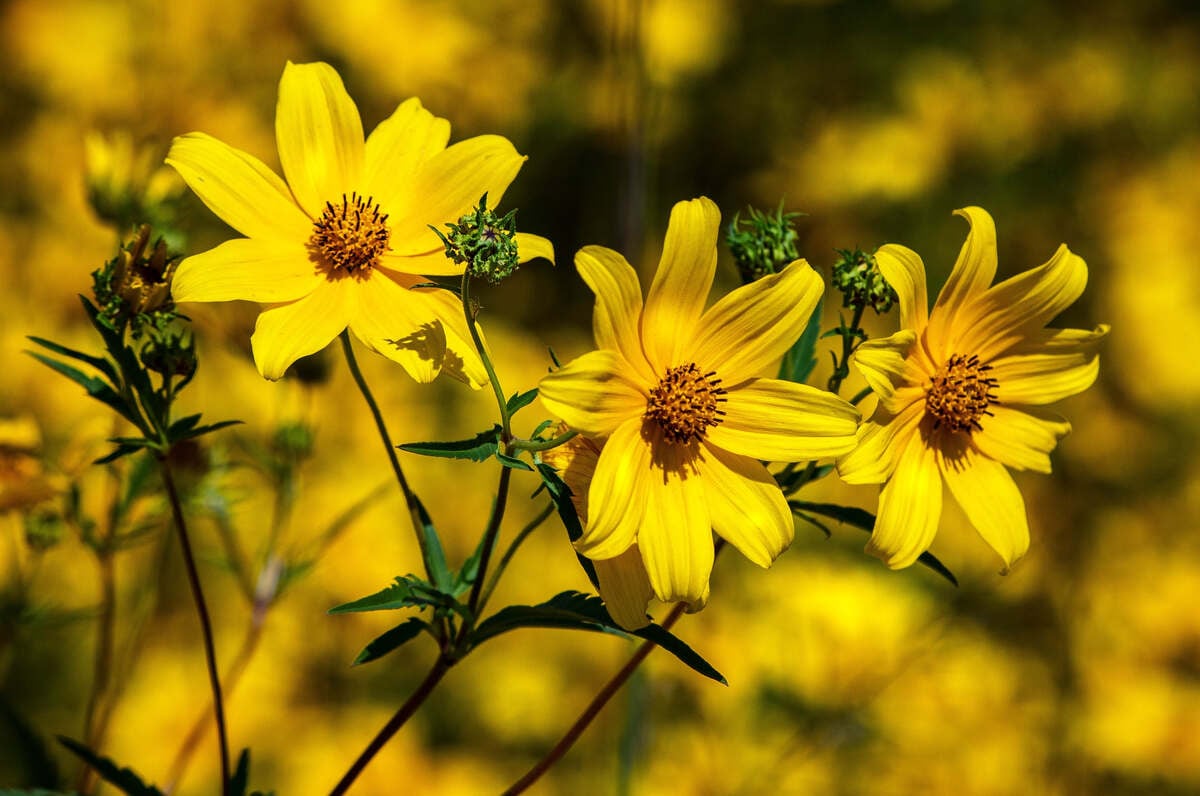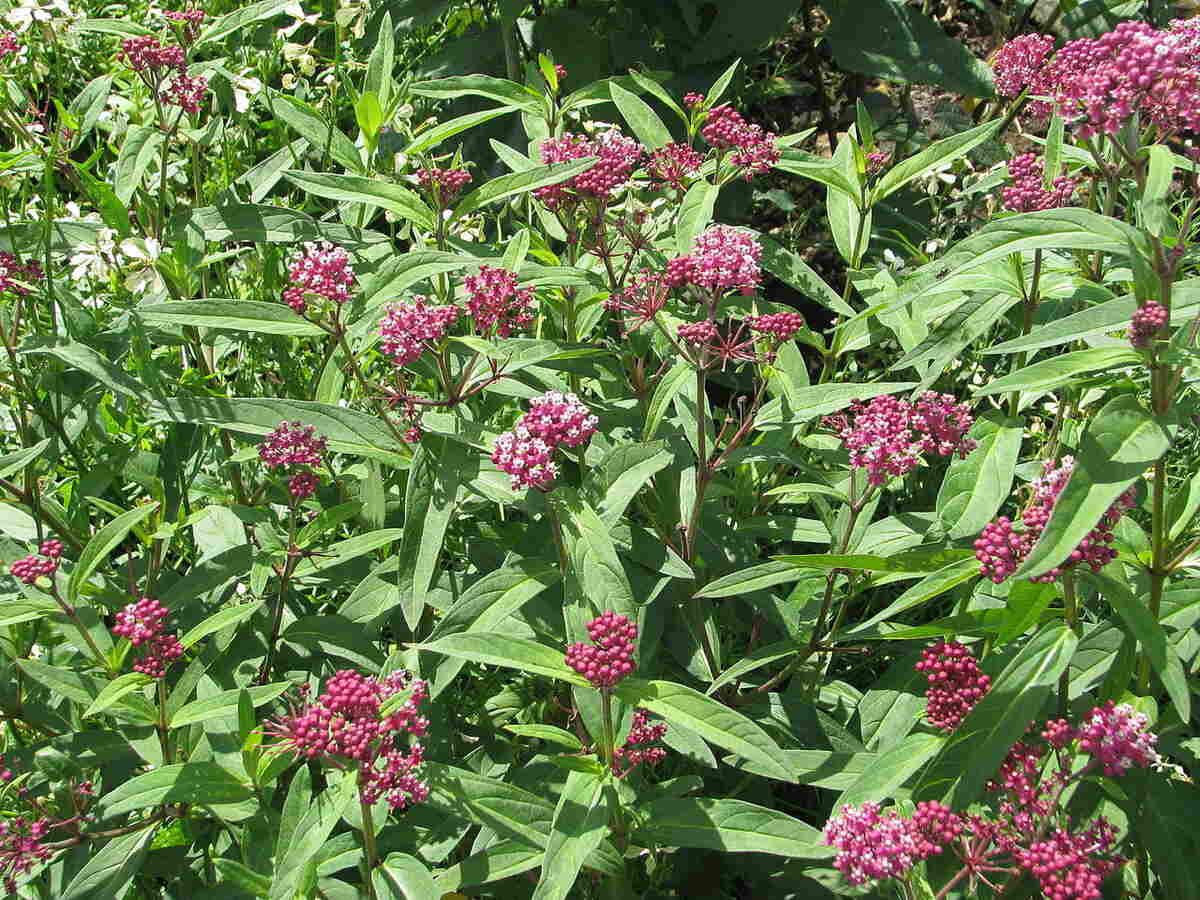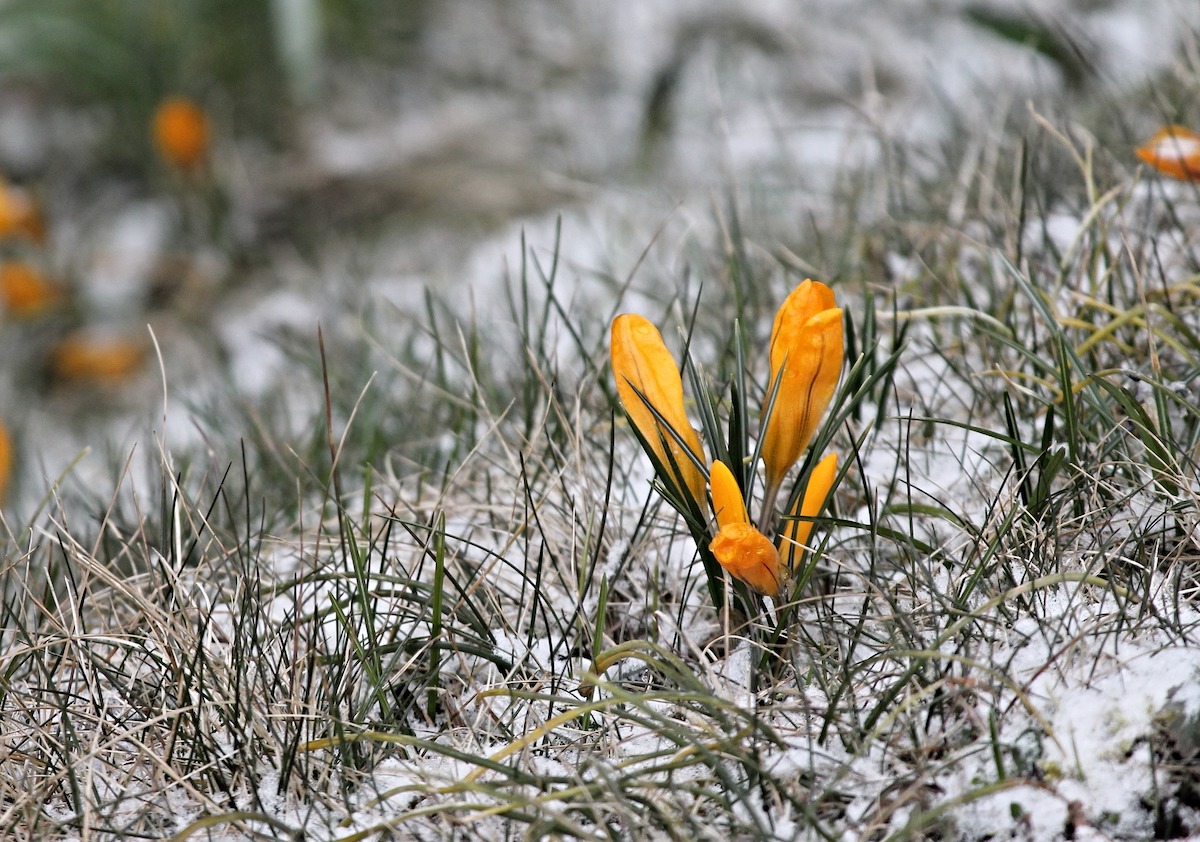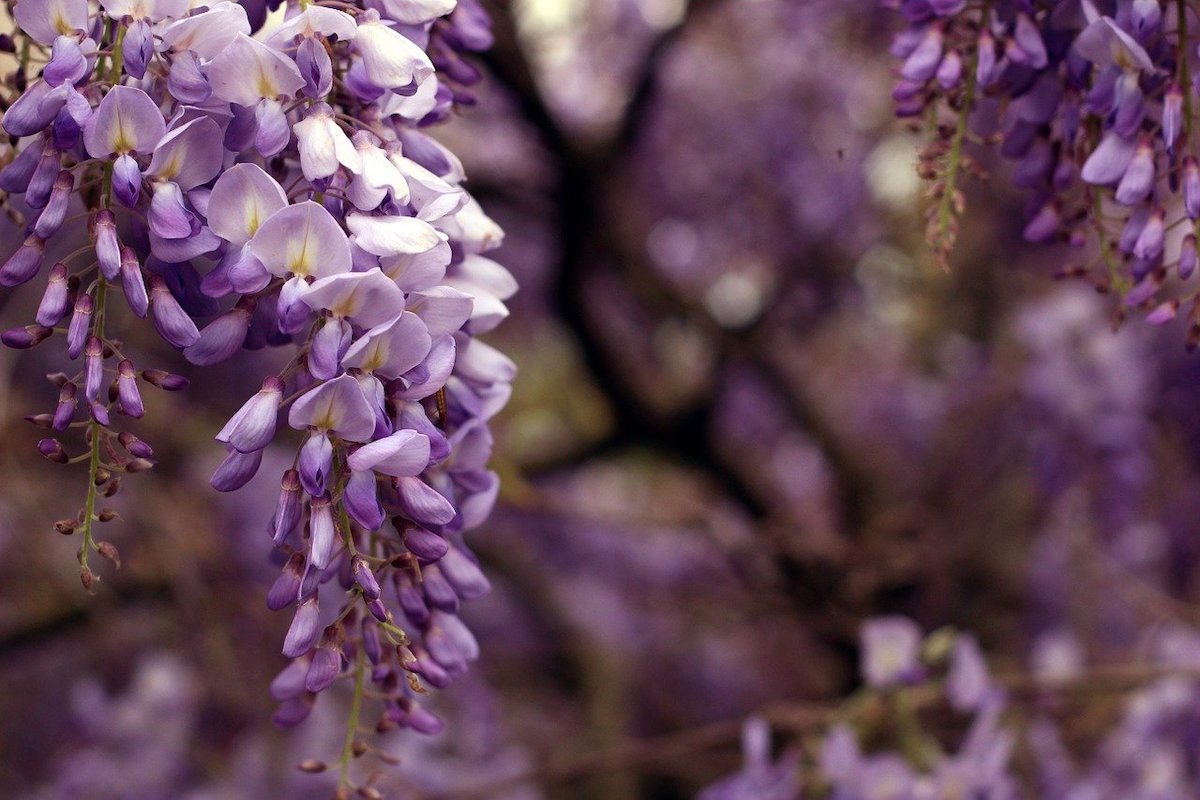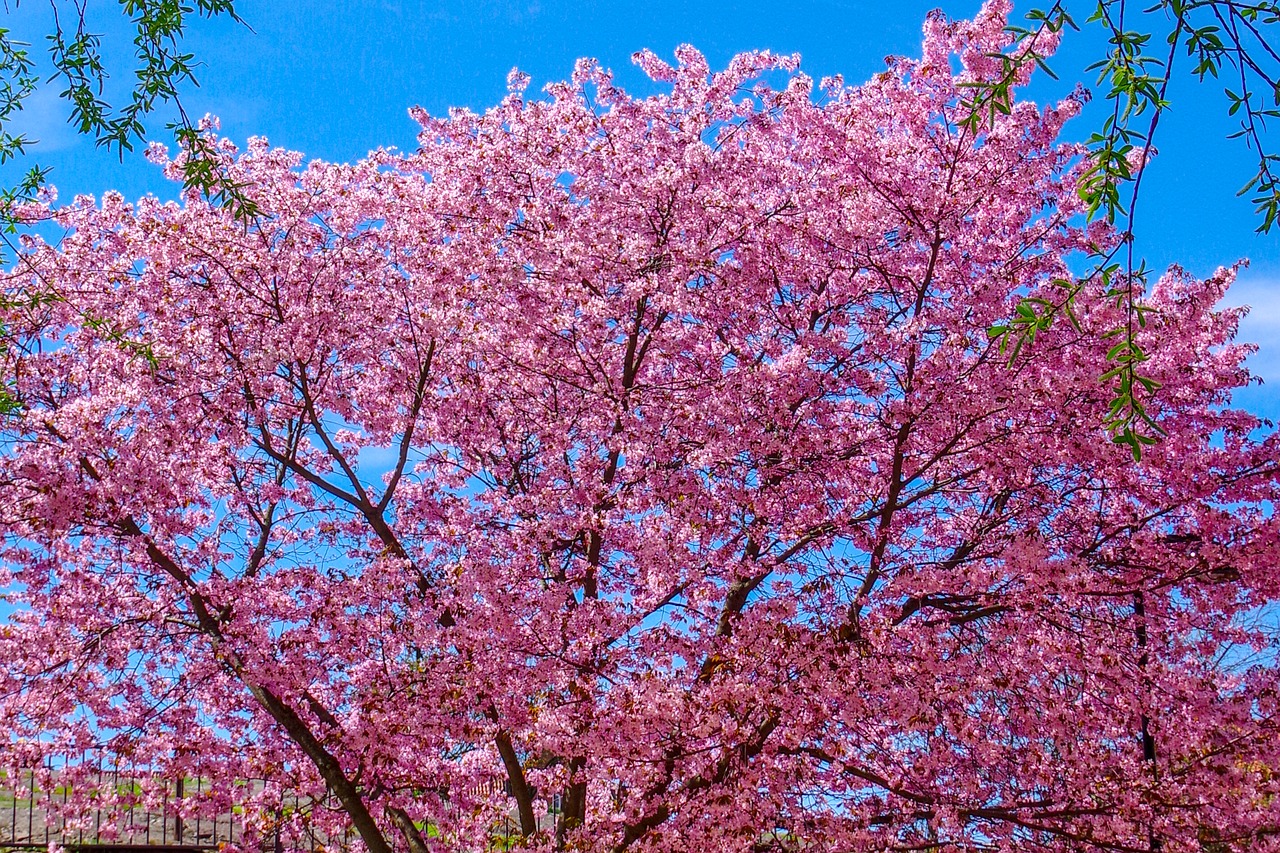
Nothing makes the neighbors slow down and admire your yard quite like a flowering tree in full bloom. You can add a glorious display of color, beauty, and fragrance with any of these 15 flowering trees.
Keep in mind: Not every tree will work in every yard. Some are native to the South and prefer warmer climates while others flourish in cooler temperatures.
15 Flowering Trees to Add Color to Your Landscaping
While we’re highlighting the 15 flowering trees that will transform your yard, we’re including information about their blooming season, color, care, and growing zones. This will help you choose the perfect floral addition for your landscape.
1. Hawthorne
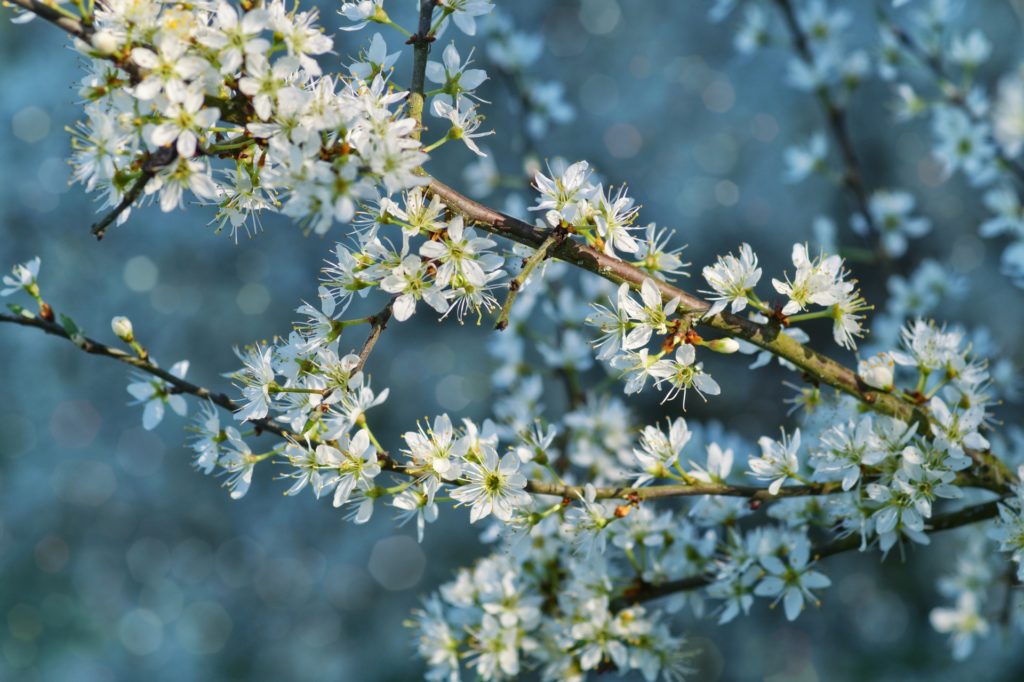
Hawthorns make a beautiful addition to any yard, with clusters of flowers in the spring and bright red berries in the winter. These trees attract songbirds and grow between 15 and 30 feet tall. A sapling is available for about $18.
Color: White is most common, but pink and red variations are not hard to find.
Blooming Season: Hawthorns are late spring bloomers. Their flowers typically pop in late May or early June, lasting 7-10 days.
Growing Zones: Hawthorns, which come in many varieties, have a wide range, from USDA Hardiness Zones 3-8. Washington hawthorns are native to the Southeast and prefer a tropical climate, while English hawthorns are invasive and prefer a cooler, wet climate.
Care: Hawthorn trees love full sun and well-drained soil. Beyond that, these trees tolerate a wide range of soil types and pH levels. Hawthorns are also vulnerable to diseases such as apple scab, fire blight, leaf spots, and rust.
2. Witch hazel
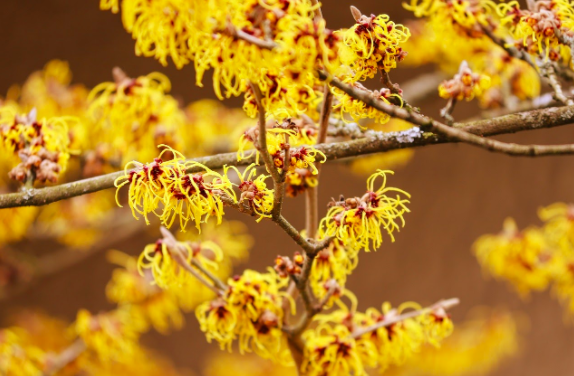
Witch hazel is a fragrant flowering plant that’s popular as a shrub or small tree. These arbors explode in a delightful spray of yellow blossoms and are often used as screening plants or hedge borders. These trees cost $12 to $23, depending on size.
Color: Witch hazel sports yellow, spidery flowers that make a perfect complement to fall color. You can find rarer variations that include purple, red, orange, and pink.
Blooming Season: This will depend on your variation. Some witch hazels bloom in late winter and early spring, between January and mid-March. Others bloom in the fall.
Growing Zones: Witch hazel is versatile, open to USDA Hardiness Zones 3-8. They are native to woodlands in the eastern United States.
Care: These trees prefer full sun and can be fussy about soil. Witch hazel thrives in slightly acidic, loamy earth and need to stay hydrated in the summer to prevent leaf scorch.
3. Jacaranda
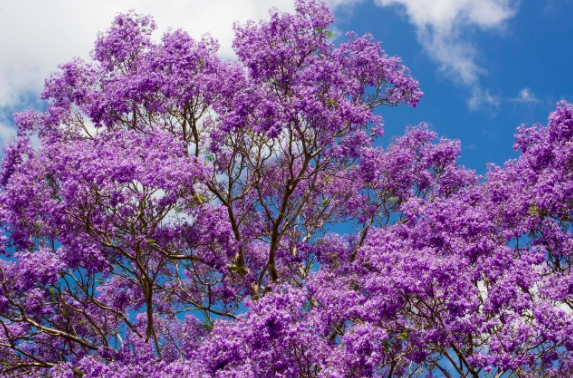
A jacaranda can turn your yard into a fairy-tale setting. This gorgeous shade tree can’t help but attract the eye with large, lavender blossoms. Jacarandas cost around $90 to $100.
Color: This ornamental tree is famous for its deep purple flowers, but it also comes in white.
Blooming Season: You can catch this impressive tree in bloom from late spring to early summer, depending on the area.
Growing Zones: A bona fide southern tree, the jacaranda needs a warm climate. These majestic arbors thrive in Hardiness Zones 9-11. Sorry if you live in the North. Native to the subtropical regions of South America, jacarandas are picky.
Care: Jacarandas like full sun and sandy soil. Also, be sure to plant your purple tree away from swimming pools: Their blooms drop every year and need to be raked up before they turn into slime.
4. Smoke tree
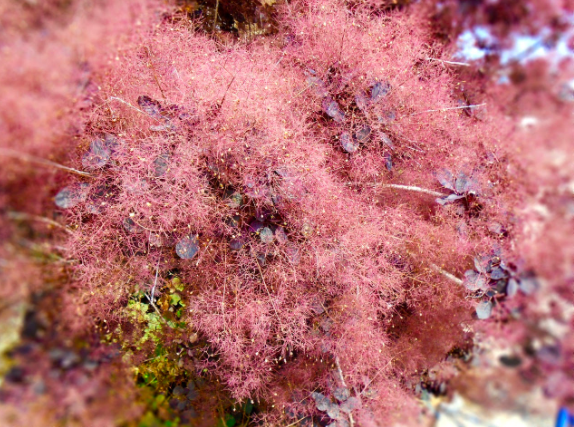
If you really want to set your yard apart, consider the smoke tree. Once a year, these flowering shrubs break out in a mass of fuzzy blooms, just like a cloud of smoke. They come in both tree and bush varieties and run between $20-$27.
Color: A light, champagne pink is the most popular color. You also can find yellow varieties.
Blooming Season: This summer bloomer sets off its smoke bomb anytime between June and September.
Growing Zones: Smoke trees like it warm, but not tropical. These trees thrive in Hardiness Zones 5-8. There are two varieties: the North American smoke tree and the Eurasion smoke bush. While non-native, the Eurasion version is not considered invasive and is more common in landscaping.
Care: Smoke trees prefer full sun. They’ll live in part sun too, but may require additional pruning. They do well in any well-drained soil and are highly drought-tolerant once established.
5. Weeping cherry
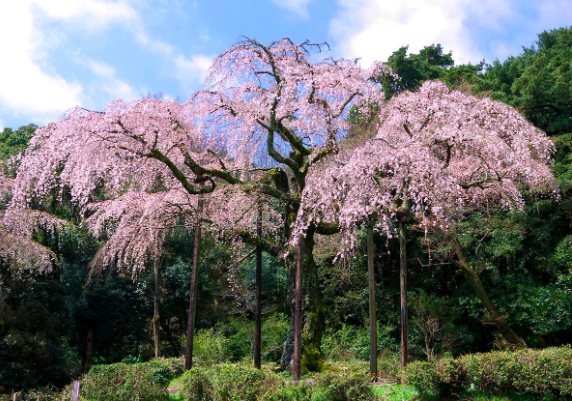
A flowering cherry tree is a spring treasure. The weeping cherry has beautiful willow-like blooms that hang down in ribbons. They grow up to 30 feet tall and cost about $50.
Color: These poignant flowering cherry trees range from light pink to white.
Blooming Season: This is a spring bloomer, and its cherry blossoms generally last two to three weeks. Its blooming season depends on where you live. The shorter your winter, the earlier your spring flowers appear.
Growing Zones: A temperate flowering tree, weeping cherries thrive in Hardiness Zones 4-8. This ornamental tree is native to Japan.
Care: Weeping cherries love to stay moist, especially in dry climates. A layer of mulch around the base can keep these fruit trees happy. They will survive in full sun to partial shade, and they prefer richer soil.
6. Mountain ash
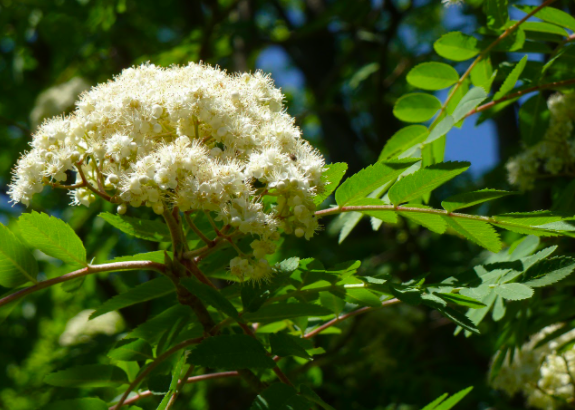
A mature mountain ash tree can reach 30 feet, making a grand addition to your landscape tableau. While best known for their orange berries, these trees also feature charming flower clusters every spring. You can get this tree for $16.
Color: White flowers are most common. If you’re looking for something really different, orangey-red is out there.
Blooming Season: The mountain ash is a year-long beauty: It produces flowers in the spring and berries in late summer. The mountain ash’s fall foliage ranges from yellow to reddish purple.
Growing Zones: Inidgenous to northeastern North America, the mountain ash is a cooler weather tree. These trees thrive in Hardiness Zones 3-6.
Care: A mountain ash prefers partial to full sun. They live healthy lives in soil that’s acidic and moist, but well-drained. Two to 3 inches of mulch will keep this one happy.
7. Oklahoma redbud
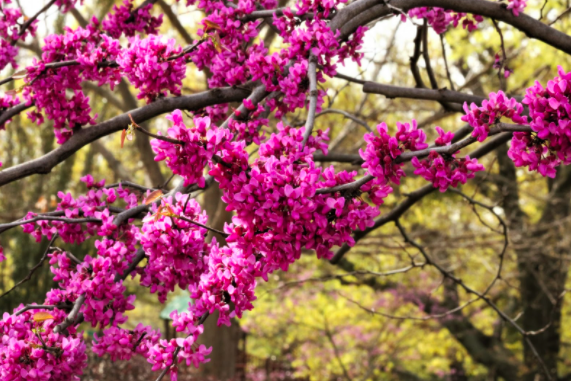
This small tree welcomes spring each year with a beautiful display of pink flowers in large clusters. The Oklahoma redbud stands 12-18 feet tall, making it the perfect addition to a small yard. They range between $20 and $100 depending on size.
Color: A redbud tree’s flowers run the gradient from soft pinks to brilliant reds.
Blooming Season: You can expect the fireworks to start in early spring. Oklahoma redbuds typically bloom in March or April before their foliage appears.
Growing Zones: This tree grows best in USDA Hardiness Zones 6-9, and is hardy down to 0 degrees. As its name might suggest, the Oklahoma redbud is indigenous to the Southwest.
Care: These hardy trees thrive in full sun to partial shade. Oklahoma redbud prefers well-drained soil and a pH of around 7.5. These trees like regular watering and will thrive with a drip line.
8. Wolf eyes
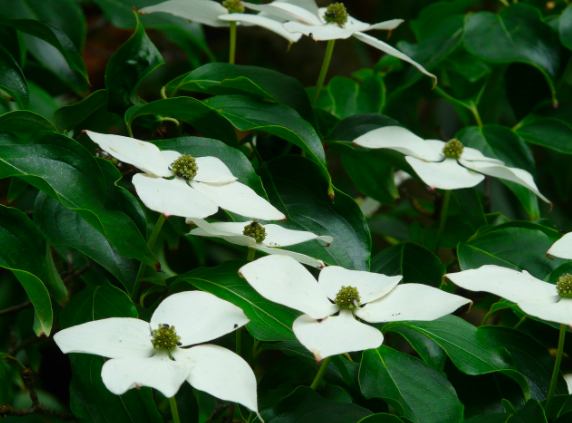
A small, shrub-like tree, wolf eyes is a flowering dogwood variation with tapered leaves and petals. Wolf eyes grow to about 10 feet in height and make a versatile addition to any landscape. This tree will cost about $130.
Color: Wolf eyes has an eye-catching white flower which stands out in contrast to its dark green leaves. Other dogwood variations come in pink. This small tree is also known for its autumn foliage, which features streaks of pink and red.
Blooming Season: Beginning anywhere from late spring to early summer, wolf eyes can bloom for up to six weeks. Its long-lasting season is part of the appeal.
Growing Zones: This temperate dogwood tree grows best in Hardiness Zones 5-8. This cultivar hails from China.
Care: This shrub prefers part shade, and well-drained acidic soil. For best results, water regularly to maintain evenly moist soil.
9. Golden chain
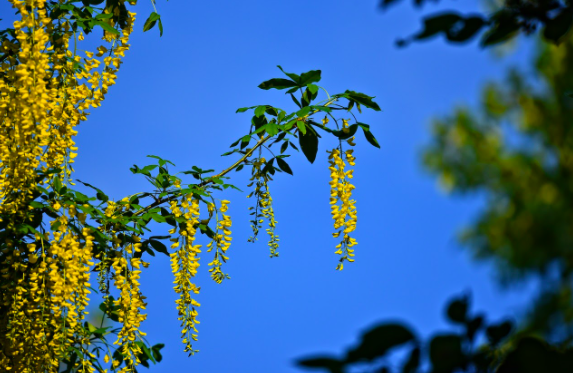
Golden chain can set your yard apart with its enchanting strings of hanging yellow blooms. Be warned though: This small tree is slightly toxic and not recommended for families with small children. Golden chain trees cost between $50 and $95.
Color: Like its name suggests, the golden chain’s flowers strike a brilliant yellow.
Blooming Season: You can expect these glorious golden chains to hang from your tree in late spring.
Growing Zones: This picky flowering tree does best in USDA Hardiness Zones 5-7 and is native to southern Europe. It’s often confused with the similarly named golden rain tree, which is invasive in North America. Make sure you are buying a Laburnum anagyroides and not a Koelreuteria paniculata.
Care: This tree is susceptible to a variety of pests and diseases. We recommend it for those experienced in tree care. Golden chains love full-sun to partial shade and grow best in rich, medium moisture soil.
10. Prairifire crabapple
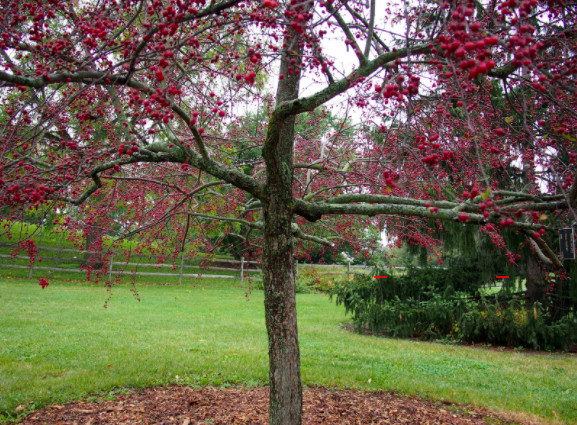
This flowering crabapple offers vivid colors for most of the year. These small trees grow 15-20 feet tall and make an impressive display of pinks, reds, and oranges. They are available for as low as $19.
Color: This crabapple tree variation ranges from a bright pink to a deep magenta.
Blooming Season: Flowers bloom in the spring, while deep purple and red foliage lasts into the summer months. This tree also grows red fruit that lasts into winter.
Growing Zones: This hardy tree does best in USDA Zones 4-8, and is native to the Chicago area.
Care: Prairifire crabapples like well-drained soil that’s mildly acidic. These fruit trees thrive in full sun. These flowering trees are also very hardy, drought tolerant, and disease resistant.
11. Tulip tree
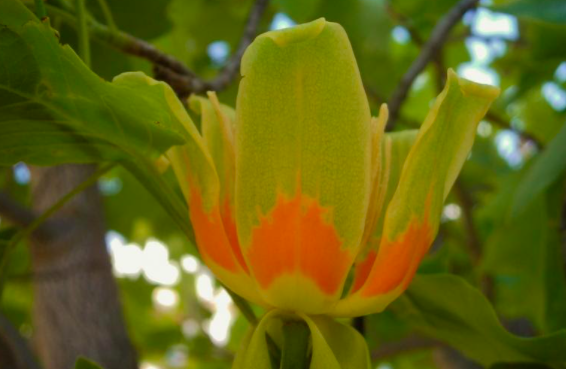
Related to the magnolia, the tulip tree makes an impressive shade tree capable of growing 60 to 90 feet tall when mature. Named for its tulip shaped blooms, this tree produces yellow blossoms with orange bands. These trees cost anywhere from $20-$50.
Color: Yellow with an orange band is the standard, but you can find orangish-red variations as well.
Blooming Season: You can count on lovely late spring flowers to appear in May and June.
Growing Zones: A relatively temperate flowering tree, you’ll find the most success in Zones 3-6. They are native to the hardwood forests of eastern North America.
Care: Tulip trees thrive in full to partial sun. They take their soil moist, yet well-drained. A layer of wood chips will protect their shallow roots and keep their patch of earth just right.
12. Purple robe locust
This stately deciduous tree grows up to 50 feet tall and makes a perfect centerpiece for larger landscapes. If you need a living privacy barrier plant or a shade tree, this fast-growing yard tree will upgrade your home. You can pick one up for around $45.
Color: The purple robe locust grows hanging pendants of deep purple flowers that are favorites of bees.
Blooming Season: Sweet-smelling flowers appear in late spring and last about 10 days.
Growing Zones: Native to North America, your purple robe locust is going to be happiest in Hardiness Zones 4-8.
Care: This versatile tree grows in a variety soil conditions as long as they drain well. It adapts easily to moisture conditions and prefers full sun, but part shade works as well. This tree is considered easy to grow and recommended for beginners.
13. Ivory chalice magnolia

Named for its enormous cup-shaped flowers, the ivory chalice magnolia grows 30 to 40 feet tall and makes an attractive addition to larger landscapes. You can also prune this deciduous tree to the size of a large shrub if space is an issue. Magnolias typically cost between $50-$100.
Color: Like its name suggests, the ivory chalice magnolia blooms a rich, creamy white.
Blooming Season: The fragrant white blossoms appear in late winter or early spring, well before you’ll see leaves on the branches.
Growing Zones: This magnolia tree grows best in Hardiness Zones 4-8 and is native to Japan.
Care: This tree prefers moist, rich soil. It helps if the soil is well-drained and slightly acidic. The ivory chalice magnolia thrives in full sun but also accepts partial shade. This tree is generally hardy, yet vulnerable to late frosts.
14. Crape myrtle
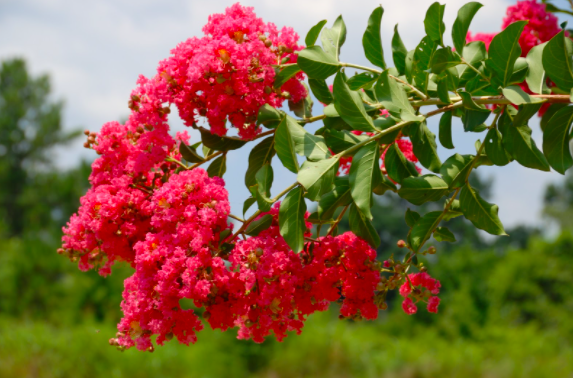
Crape myrtle is the perfect tree for summer color. This flowering tree has a long blooming period and can grow anywhere from 6 to 25 feet tall, depending on climate. You can pick up a crape myrtle for about $42.
Color: The crape myrtle’s fluffy clusters of flowers come in a variety of colors, including pink, white, lavender, and red.
Blooming Season: Expect crape myrtle to show its colors from mid-summer to fall.
Growing Zones: This southern tree likes it warm. Crape myrtle thrives in Hardiness Zones 6-9 and is native to China and Korea.
Care: You’ll find your crape myrtle does best in full sun and well-drained soil with medium moisture. It responds well to light fertilization and gentle pruning.
15. Red chestnut
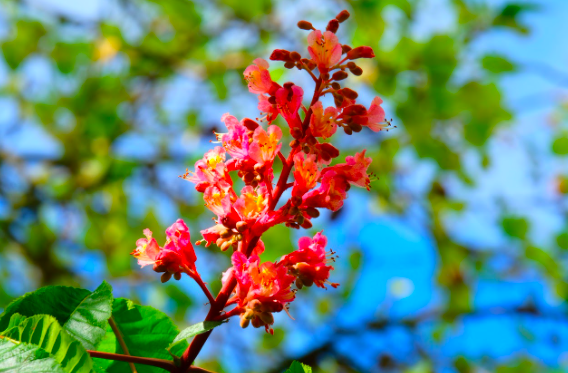
A variety of the horse chestnut family, red chestnuts are grown for their attractive red flowers. This buckeye hybrid grows to 35-40 feet and makes a great flowering shade tree. Red chestnut trees sell for about $40.
Color: The red chestnut blooms in rose-colored clusters. The flowers stand in lovely contrast to the tree’s dark green leaves.
Blooming Season: Another spring bloomer, the red chestnut unfurls its beauty around May.
Growing Zones: Native to the Balkan Peninsula, this leafy deciduous tree is most at home in USDA Hardiness Zones 5-8.
Care: This stately chestnut tree prefers full to partial sun and moist, well-drained soil. Young trees benefit from pruning, and older trees are typically resistant to most common tree diseases.
How can a professional landscaper or arborist help with your flowering trees?
Glad you asked! A professional landscaper or arborist can help plant your trees or plan their incorporation with landscape design. If you notice blight, tree disease, or wilting, an arborist can treat your trees and get them looking their best again.
If your tree is struggling or fails to bloom, a professional can analyze its soil, lighting, and nutrition to provide useful tips for taking good care of your new jacaranda or crape myrtle.
Main Photo Credit: Needpix
